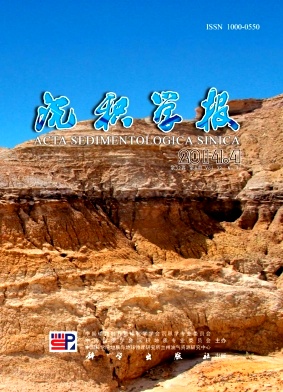Sedimentological and Ichnological Recognition of Estuarine Subfacies and Its Reservoir Implications in Palaeogene Shahejie Formatiom from Subdivision Three Dongpu Depression, Henan, China
- Publish Date: 2014-08-10
-
Key words:
- estuarine deposits /
- mud/sand couplets /
- trace fossils /
- Dongpu depression /
- Palaeogene
Abstract: Five subfacies(A-E) which are all contained Inclined Heterolithic Stratification (IHS) and marine, brackish water traces have been found in Shahejie Formatiom Subdivission 3(Palaeogene) Dongpu depression, Henan, China. It is widely accepted that IHS invoke a tidal influence on a fluvial or estuarine system to provide the fluctuating regime required to produce the heterogeneous bedding which typically consists of repetitive sets of mud/sand couplets on a scale of centimeters to decimeter .Various mud/sand couplets with trace fossils of marine origin present in the wells located in Wenliu area of Dongpu depression clearly recorded a fluvial sourced sand containing syneresis and Diplocraterion traces in the upper estuary (subfacies A) muddy sediments with distortion of laminated material related to turbidity maximum and trace fossils of Palaeophycos, Planolites as well as Chondrites (SubfaciesB, C) and sand sourced from seaward consists of trace fossils of Terebellina, Rhizocorallium, Ophiomorpha, Terebellina in the lower estuary(subfacies D, E). They are interpreted as estuarine deposits based on sedimentologic and Ichnologic analysis. Examples both in home (Wenliu, Henan) and abroad (North America) show that sand sourced from seaward in the lower estuary are good target for hydrocarbon exploration.
| Citation: | Sedimentological and Ichnological Recognition of Estuarine Subfacies and Its Reservoir Implications in Palaeogene Shahejie Formatiom from Subdivision Three Dongpu Depression, Henan, China[J]. Acta Sedimentologica Sinica, 2014, 32(4): 744-753. |






 DownLoad:
DownLoad: